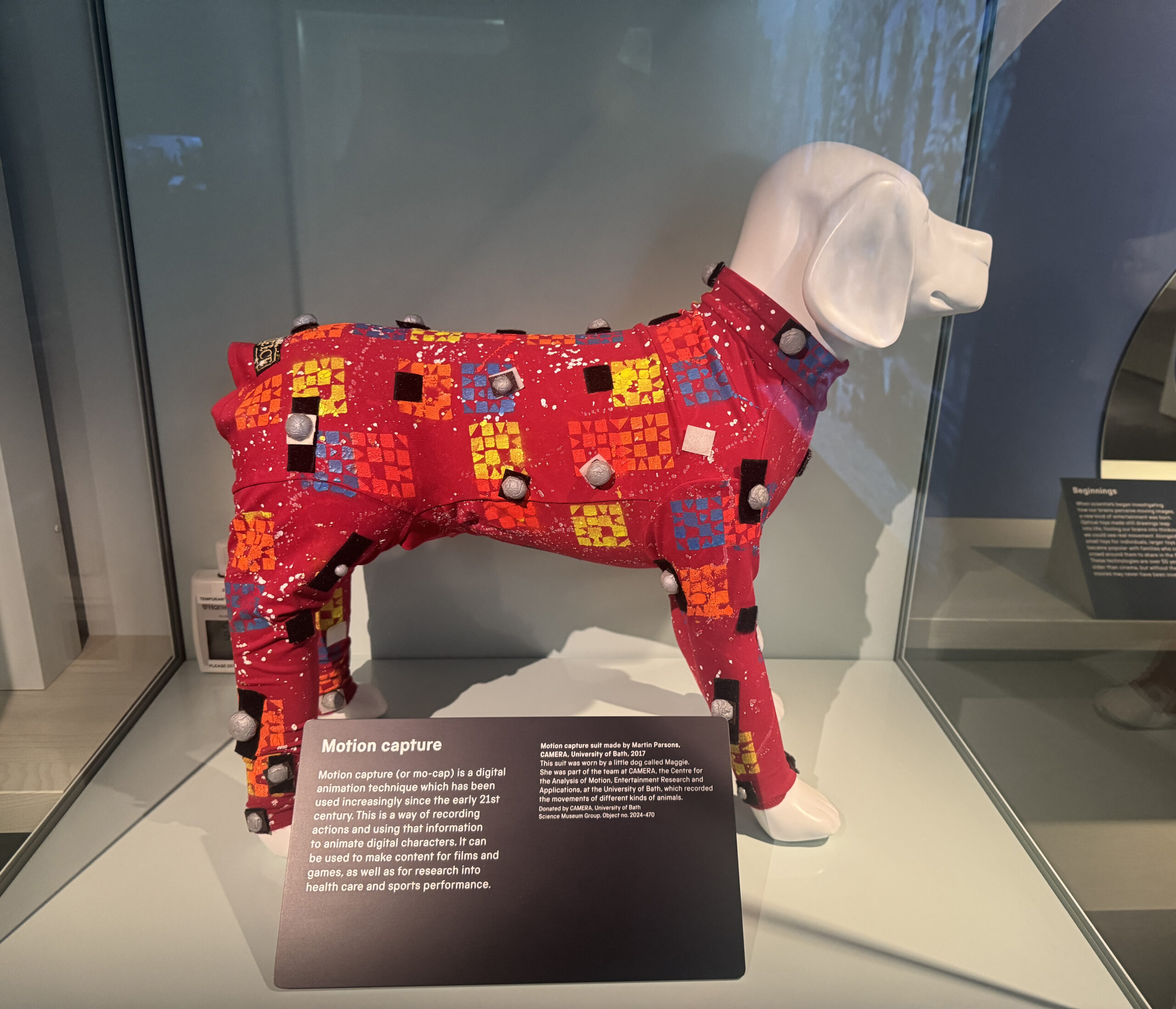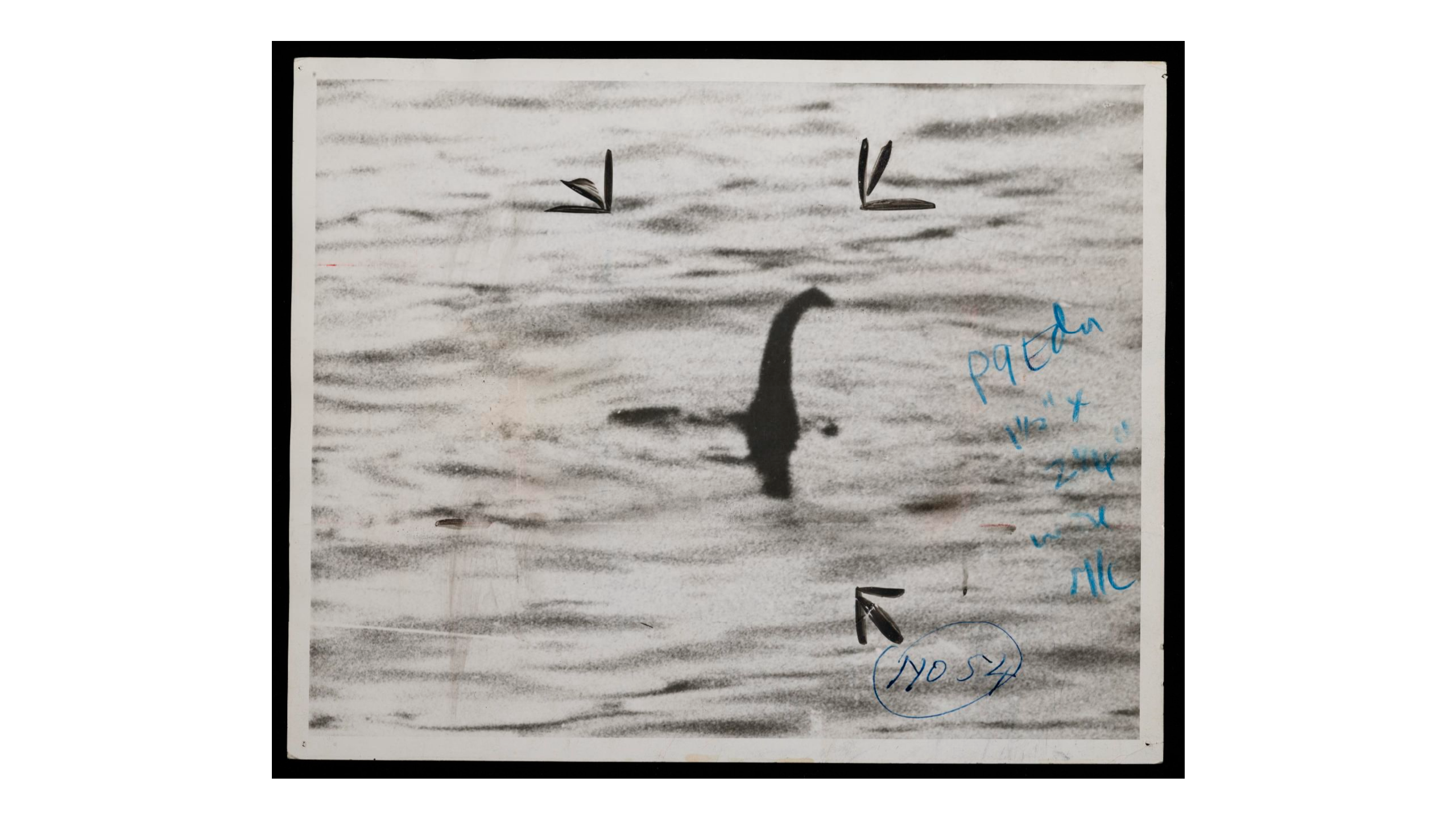The mirror-like surface of a daguerreotype plate is very fragile to handling and surrounding environmental conditions. Consequently, they were placed behind glass, inside cases, frames and jewellery. However, overtime the glass used to protect the surface of our daguerreotype began to deteriorate, creating an opaque pitted pattern and stains that could drop on its surface. I used a small glass sucker to remove the glass and plate from the case, opened it, washed and dried the glass before putting it all back together again. I added a specialist sealed package to protect this daguerreotype for its future life on gallery. The most satisfying job!
Eleanor, Conservator – Maggie’s Mo-Cap suit

It was really difficult to pick a favourite object in all of the Sound and Vision galleries, having got quite a few great memories of each, but the little motion capture suit has to be one of my favourites!
It was worn by a dog, Maggie, in order to record her movements and translate them onto a computer screen. The little jersey suit is so charming and provided a challenge to get it on the mannequin! Owing to how fragile the paint on the suit is, it was important not to stretch the jersey fabric any more than was necessary. In the end, our mount-maker adapted a dog mannequin so we could remove its legs in order to get the suit over the body, as the only opening was at the back of the suit and unlike a real dog, the mannequin wasn’t able to bend its hocks! In the end, we managed to ease the mo-cap suit on and lock in the mannequin’s legs after feeding them up the legs of the suit! The bizarre scenario of dressing a legless dog mannequin has won this object a special place in my heart.
Finally, as someone who plays computer games that use mo-cap technology, it was great to be involved in displaying some of the behind the scenes equipment that enable that technology and give it a spot within sound and vision technologies!
Alex, Documentation Officer and Lewis, Curator – Loch Ness monster photo

Alex: My favourite object in the Sound and Vision galleries is this photograph of the Loch Ness Monster from the Daily Herald Archive. The idea of a monster lurking in the depths of Loch Ness is compelling, and people have been searching the loch for evidence of Nessie for decades. This photograph dates from 1934. It must have been so exciting for people to see this photograph in the newspapers—finally there was proof! Well, not quite. While some did take this photograph as proof of the monster’s existence, it was later revealed to be an elaborate hoax. The Nessie in the photograph isn’t a creature from the deep, but rather a toy submarine covered in putty! It’s a shame we still don’t have proof that Nessie is real, but this photograph is a great example of how photographic technologies can be used to trick us.
It was my job to find this photograph in our collections stores so it could be catalogued and digitised for use in the new galleries. It turns out Loch Ness isn’t the best place to find Nessie after all—you’ll have more luck searching the depths of our archives!
Lewis: This is the most famous ‘photograph’ of The Loch Ness Monster, and for decades after it was published in newspapers it divided opinion on whether it shows the real Nessie, or an elaborate hoax. The conspiracy was finally revealed in the 1990s. The ‘monster’ was a cleverly crafted model made from a toy submarine and putty. The waves behind Nessie are in fact only small ripples, but the perspective of the image makes them look bigger. One of the people behind the hoax, MA Wetherell, explained that he was motivated to create a fake that would fool the newspapers after his earlier ‘evidence’ of footprints of the Loch Ness Monster were debunked by the Daily Mail. We use this story in our new gallery to explain how sound and vision technologies can be used to fool us, from outlandish stories of monsters in Lochs, to everyday scams. If someone gets a real photograph of Nessie, I’ll put it up next to this one to compare!

